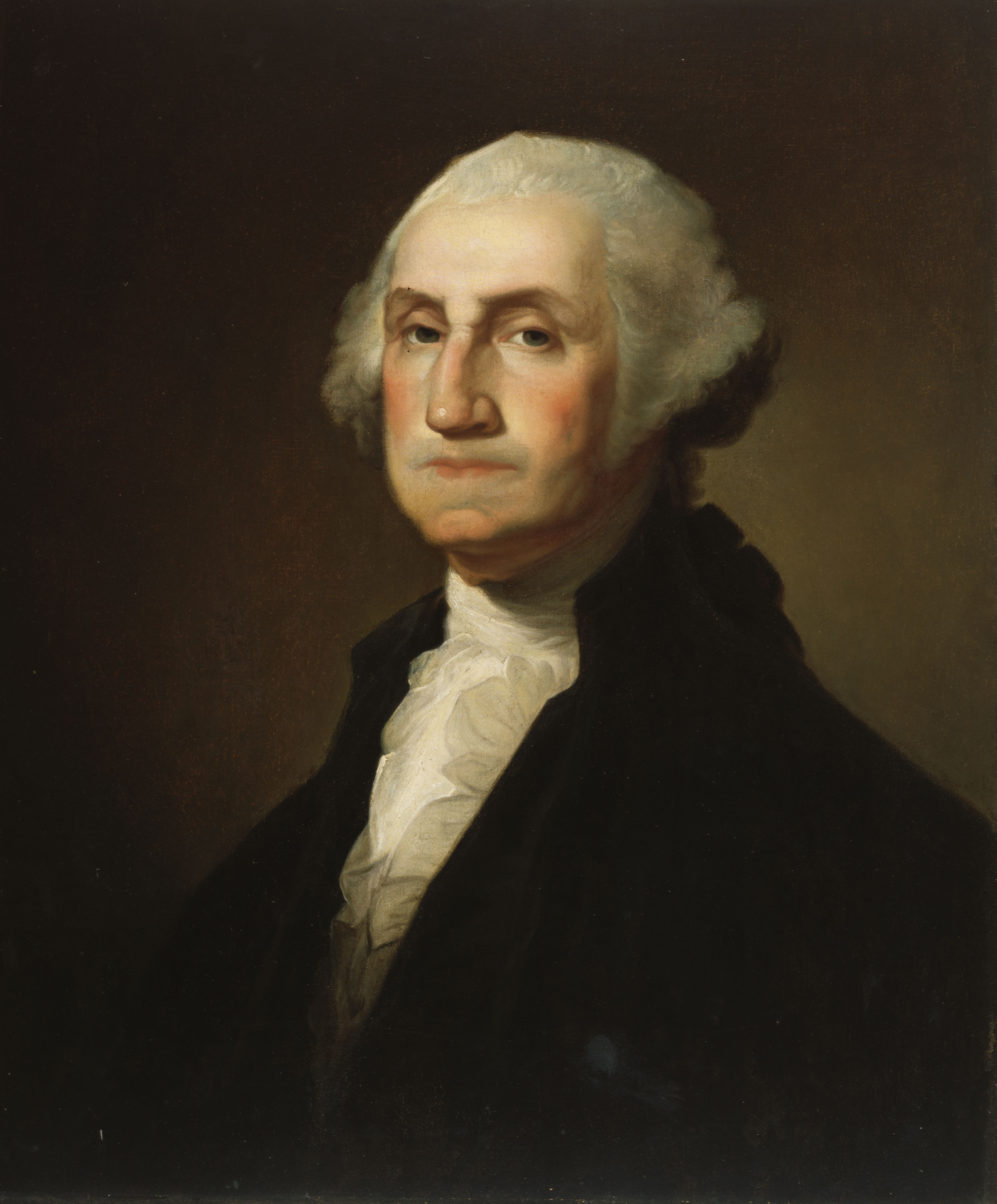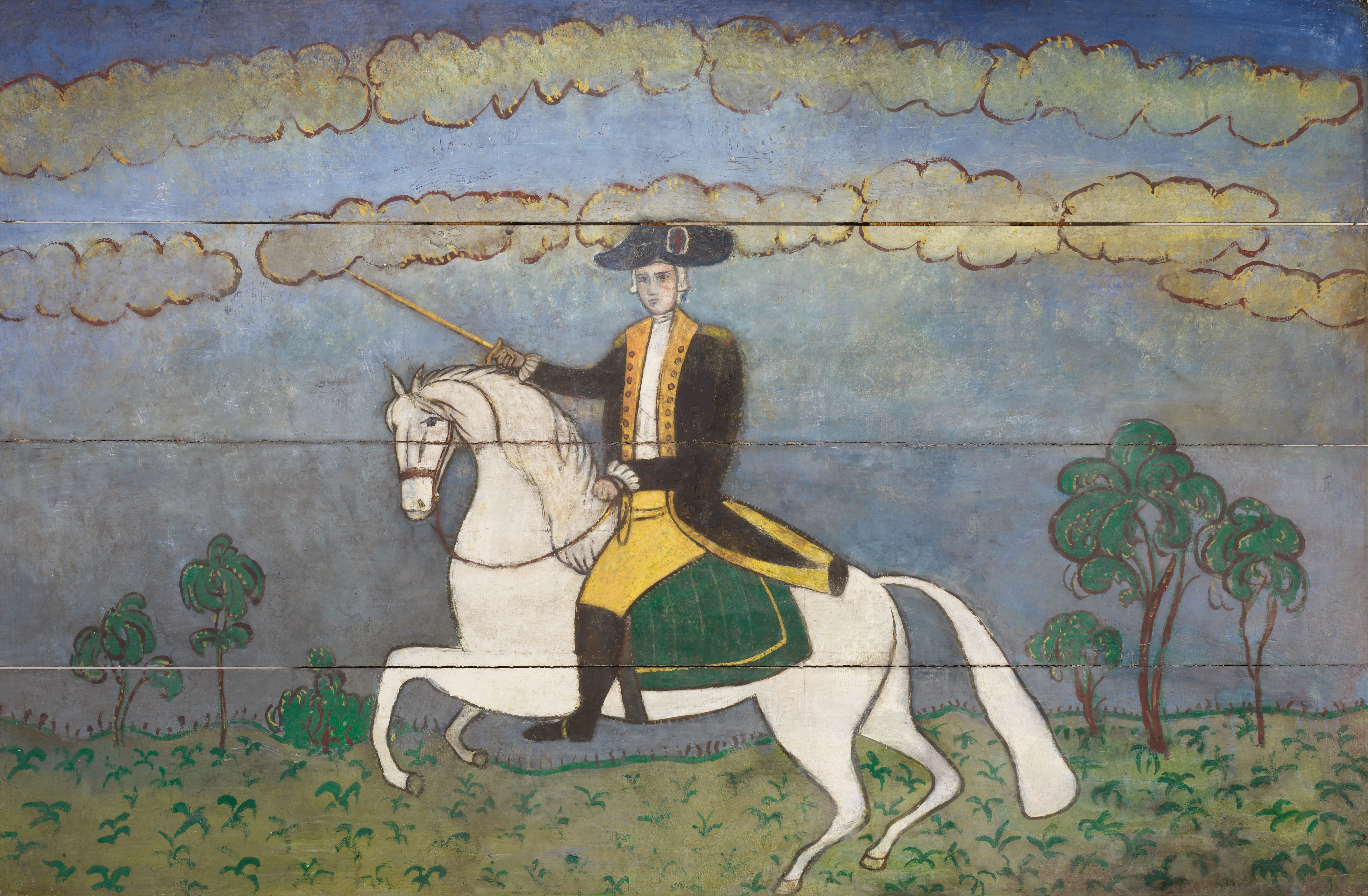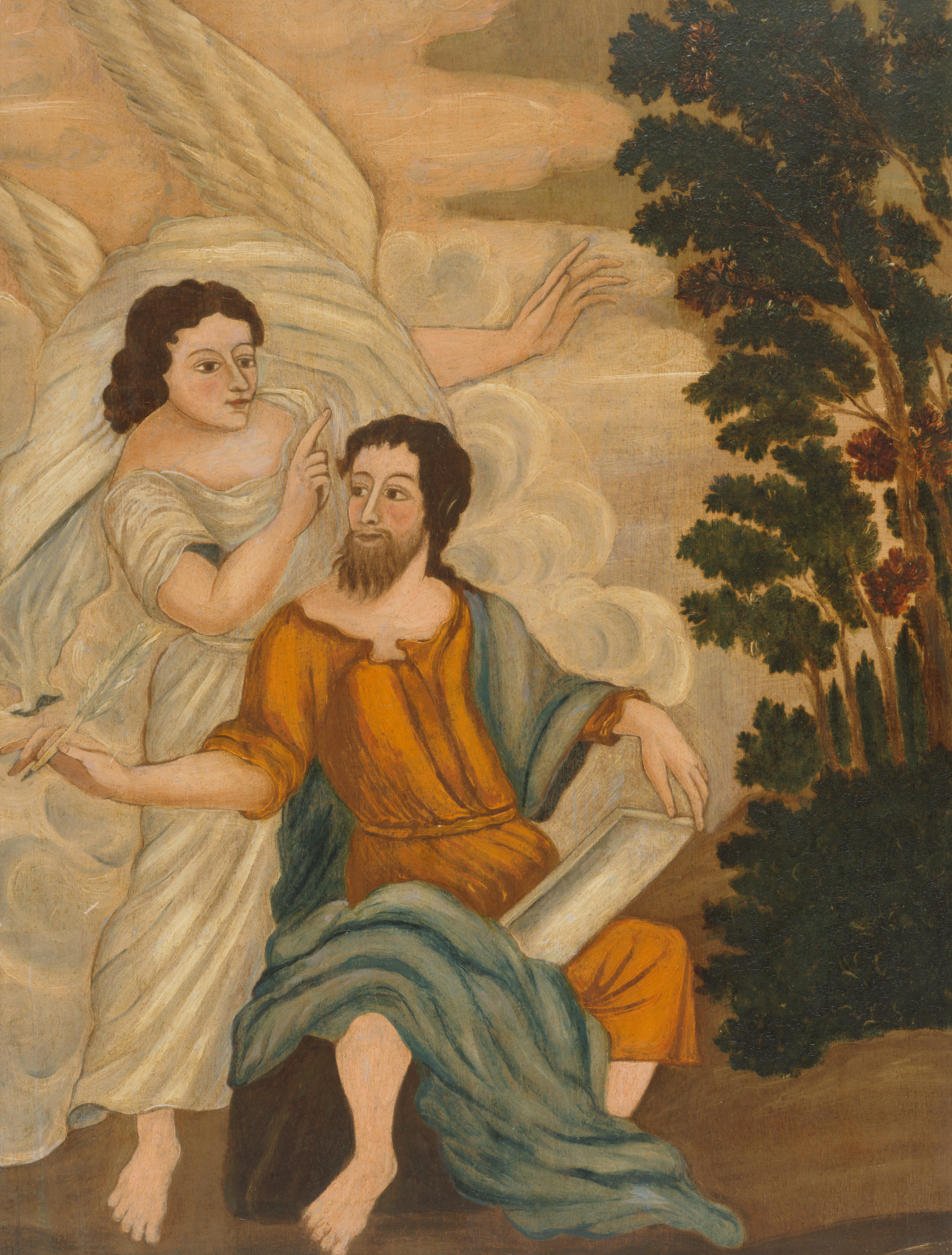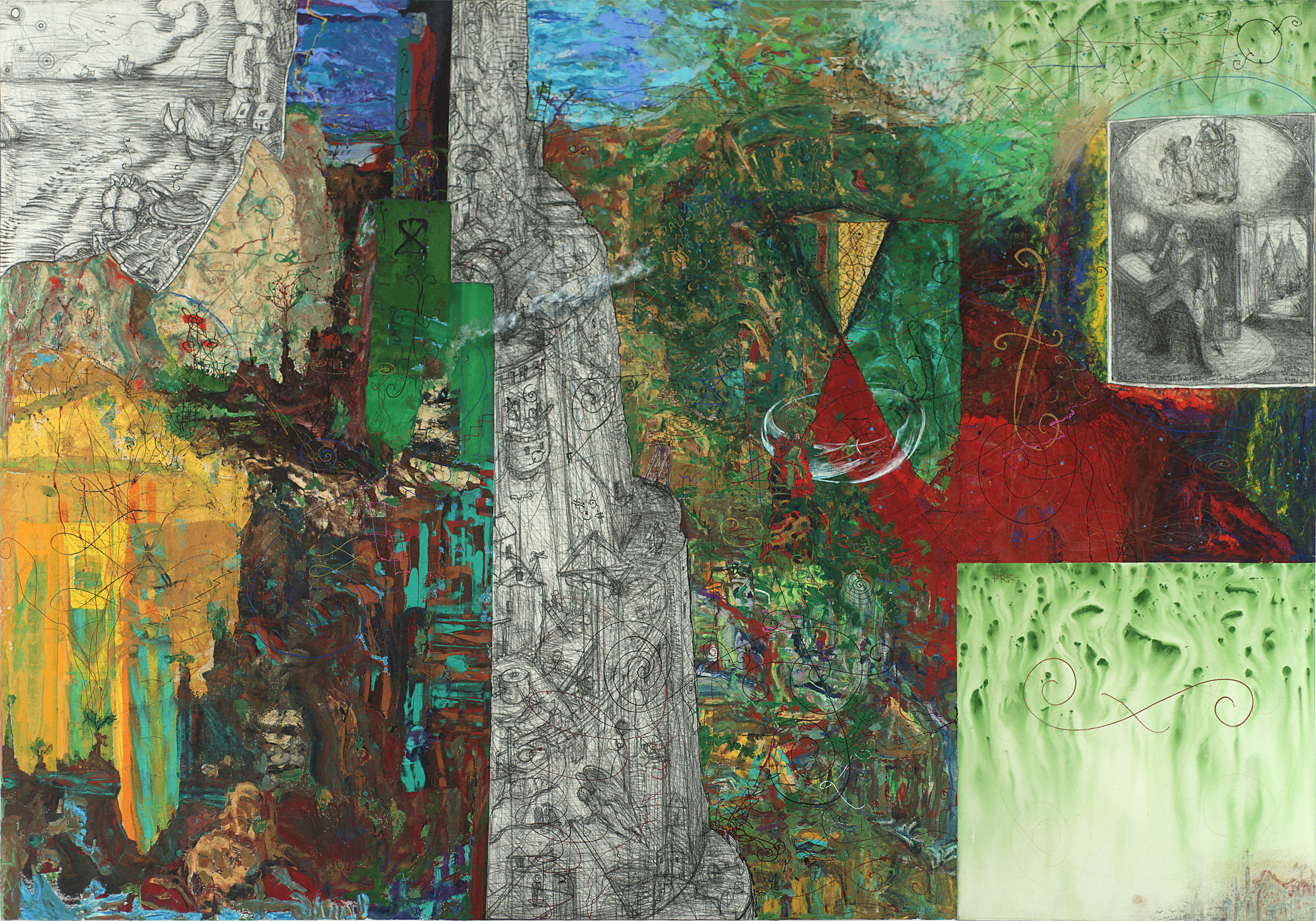E. pluribus unum (after Rembrandt Peale, George Washington)
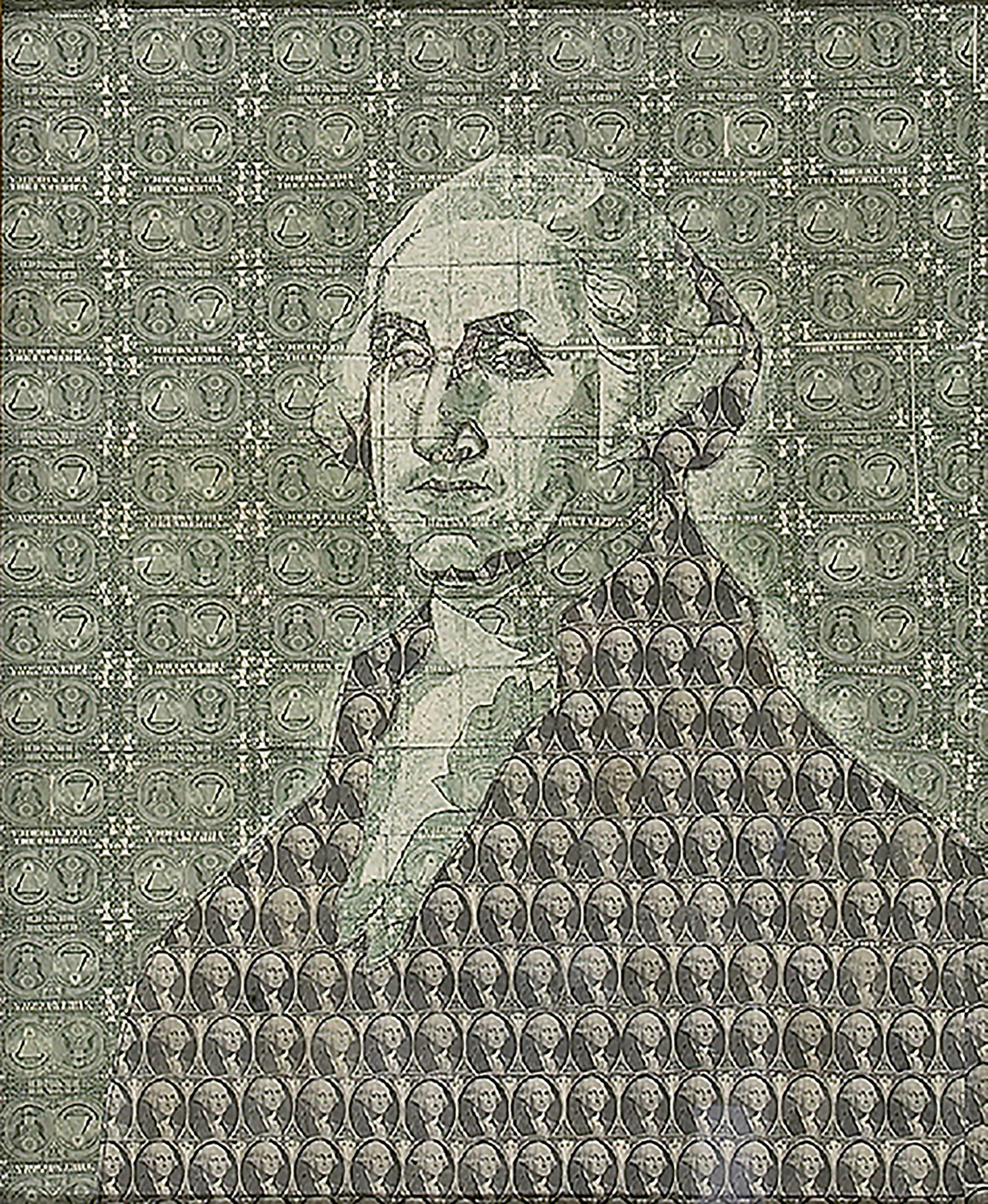
What determines the value of a work of art?
This collage was created from approximately 250 dollar bills meticulously arranged, folded, and sewn together to re-create a famous portrait by Rembrandt Peale of George Washington. Beldner’s labor-intensive technique consciously plays on the average viewer’s equation of the hours of labor with value in art. His use of the national motto—e pluribus unum (“out of many, one”)—for the title of the work makes witty reference to the creation of this portrait from many dollar-bill portraits.
